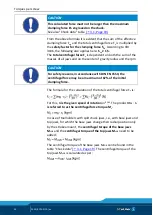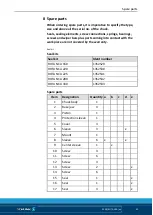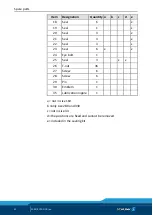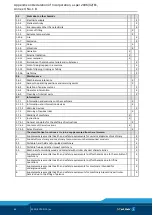
Function
02.00|ROTA NCA |en
35
Function
Function and handling
Wedge-hook chucks are actuated using rotating closed-center or
open-center hydraulic cylinders or via a static hydraulic cylinder.
The axial tensile and pressure forces are converted to the radial
jaw clamping force by the wedge hook angle in the piston and
base jaws.
The clamping and opening path of the chuck jaws is determined by
the hydraulic cylinder. The fine serration of the base jaws can be
used to mount standard jaws as well as special jaws for
complicated workpiece shapes. The top jaws are moved or
changed in the open clamping position.
WARNING
Clamping further above the chuck surface results in lower
clamping force.
If the workpiece is released in an uncontrolled manner, there is a
risk of personal injury and damage to the system.
•
Refer to the "Technical data" chapter!
Functional testing
Functional test
After installation of the chuck, its function must be checked prior
to start-up.
Two important points are:
•
Clamping Force!
The clamping force of the chuck must be
achieved at max. operating force/pressure.
•
Stroke control!
The stroke of the clamping piston must allow a
safety zone at the front and rear end position. The machine
spindle may only be started when the clamping piston has
passed through the safety zone. Only limit switches that meet
the requirements for safety limit switches specified in DIN EN
60204-1 may be used.
When determining the necessary clamping force to machine a
workpiece, take the centrifugal force acting on the chuck jaws into
account (according to VDI 3106).
6
6.1
6.2
Содержание ROTA NCA 160
Страница 43: ...Drawing 02 00 ROTA NCA en 43 Drawing 9 ...












































